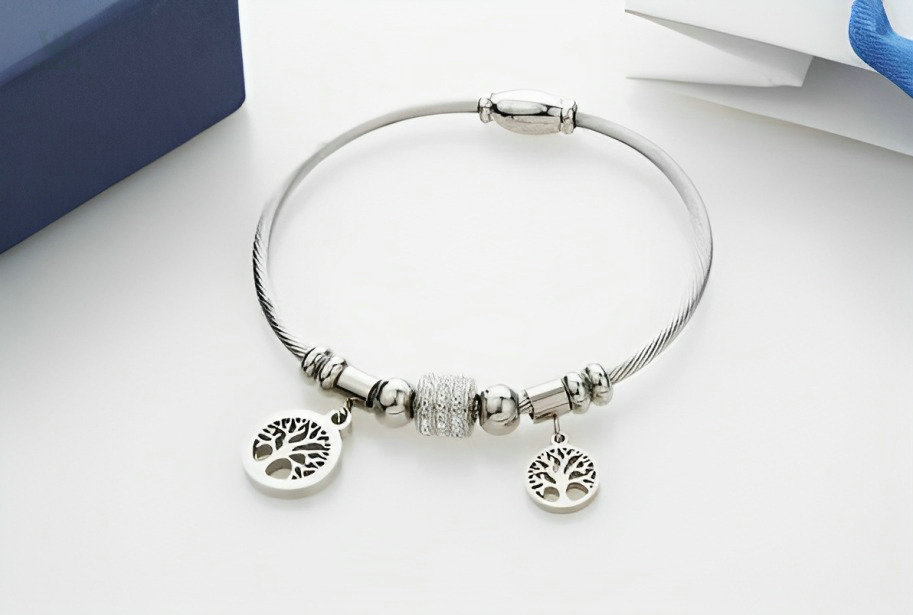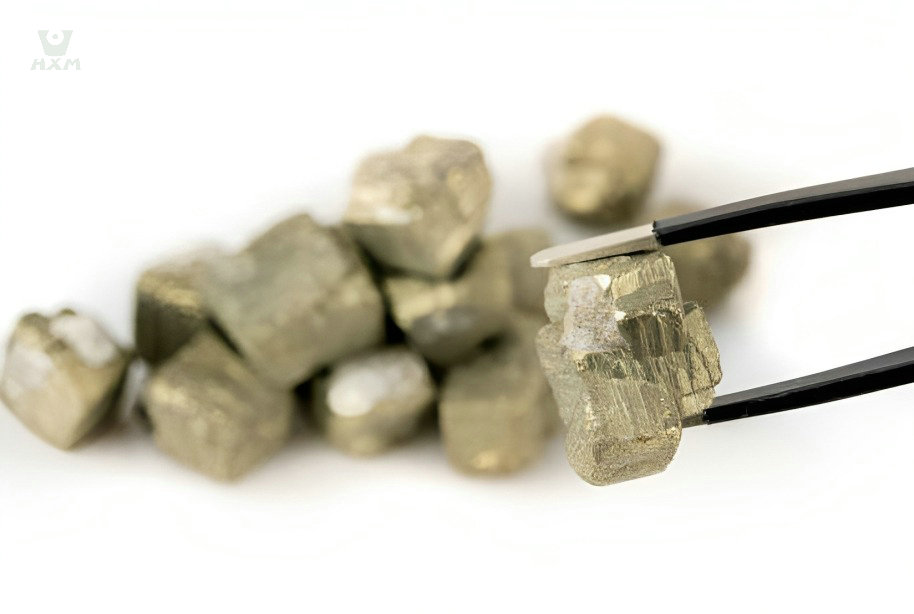From jewelry to household fixtures, zinc alloy finds widespread application for its durability and cost-effectiveness. However, as the demand for skin-friendly materials rises, a pertinent query emerges: Is zinc alloy hypoallergenic? This inquiry delves into the intricate relationship between zinc alloy compositions and potential allergic reactions, exploring whether this versatile alloy is truly skin-safe.
is zinc alloy hypoallergenic?
Zinc, when combined with other metals, forms alloys like brass or nickel silver. Some individuals may exhibit sensitivity to zinc alloys due to trace metals like nickel. Pure zinc is less allergenic, but alloys’ composition affects skin reactions. Manufacturers often use zinc alloys in jewelry or everyday items, posing a risk for allergic reactions in sensitive individuals.
Is zinc alloy hypoallergenic?
what is zinc alloy?
Zinc alloy, a versatile metallic compound, comprises primarily zinc along with other metals. Commonly used elements include aluminum, copper, magnesium, and nickel, blended with varying proportions of zinc to form diverse alloys. These alloys exhibit enhanced properties such as corrosion resistance, strength, and affordability compared to pure zinc. Zinc alloy manufacturers utilize specific compositions tailored to applications in industries like automotive parts, electronics, and jewelry, where alloys like brass or nickel silver are prevalent. The precise combination of zinc with other elements determines the alloy’s characteristics, influencing its hypoallergenicity and suitability for various purposes.
types of zinc alloy
Zinc alloys encompass various types, each with distinct compositions tailored for specific applications. Here are a few examples with their chemical compositions:
| Alloy Type | Composition (%) |
|---|---|
| Brass | Copper (55-70%), Zinc (30-45%) |
| Alloy Type | Composition (%) |
|---|---|
| Nickel Silver | Copper (60-70%), Nickel (10-30%), Zinc (5-30%) |
| Alloy Type | Composition (%) |
|---|---|
| Zamak 3 | Aluminum (3.5-4.3%), Copper (0.01-0.02%), Magnesium (0.03-0.06%), Zinc (remainder) |
| Zamak 5 | Aluminum (3.9-4.3%), Copper (0.7-1.1%), Magnesium (0.03-0.06%), Zinc (remainder) |
| Zamak 7 | Aluminum (0.01%), Copper (0.01%), Magnesium (0.01%), Zinc (remainder) |
| Alloy Type | Composition (%) |
|---|---|
| ZA-8 | Aluminum (8%), Copper (0.08%), Magnesium (0.02%), Zinc (remainder) |
| ZA-12 | Aluminum (11%), Copper (0.1%), Magnesium (0.02%), Zinc (remainder) |
| ZA-27 | Aluminum (27%), Copper (0.3%), Magnesium (0.03%), Zinc (remainder) |
-Alloyours zinc alloy manufacturers
Is zinc alloy hypoallergenic?
what is Hypoallergenicity?
Hypoallergenicity refers to the property of a substance or material to cause fewer allergic reactions in individuals compared to others of its kind. It implies a reduced likelihood of triggering allergic responses or sensitivities in people prone to allergies or skin sensitivities. Hypoallergenic substances are formulated or chosen to minimize the risk of provoking allergic reactions, making them suitable for individuals with heightened sensitivity or allergy concerns.
Factors determining hypoallergenic properties
The hypoallergenic properties of a material are influenced by various factors rooted in its chemical composition and structural characteristics:
Substances with minimal allergenic components, such as fewer reactive metals or low levels of compounds known to trigger allergies, tend to possess higher hypoallergenic properties. For example, materials like pure metals (e.g., titanium) or alloys with reduced allergenic elements (e.g., nickel-free alloys) are often considered hypoallergenic.
Surface texture, smoothness, and finishing treatments play a role. Smoother surfaces with fewer irregularities or rough edges are less likely to provoke skin irritation, reducing the risk of allergic reactions.
High-purity materials with fewer impurities or contaminants are less likely to trigger allergic responses. Materials sourced and manufactured with strict quality controls minimize potential allergens, contributing to their hypoallergenic nature.
Materials compatible with the body’s biological systems tend to be hypoallergenic. Biocompatible substances exhibit minimal reactivity when in contact with bodily tissues, reducing the likelihood of allergic responses.
The propensity of a material to release allergenic substances upon contact with body fluids or environmental factors influences its hypoallergenicity. Materials with low rates of allergen release or leaching are considered safer for sensitive individuals.
Empirical evidence from clinical studies, user experiences, and dermatological assessments provide crucial insights into the hypoallergenic nature of a material. Testing materials on individuals with known sensitivities helps determine their potential to cause allergic reactions.
Understanding these factors aids in evaluating the hypoallergenic properties of materials, guiding the selection of safer options for individuals prone to allergies or skin sensitivities.
The role of zinc and other metals in alloys
The role of zinc and other metals in alloys profoundly influences both their properties and hypoallergenic potential, crucial factors considered by zinc alloy manufacturers.
Zinc, a primary component in alloys, imparts essential characteristics. Its corrosion resistance and malleability enhance the overall durability and workability of zinc alloys. However, zinc itself might pose allergic risks for sensitive individuals, prompting zinc alloy manufacturers to carefully balance its proportion to minimize potential allergenicity in zinc alloys.
Incorporating other metals like copper, nickel, or aluminum alongside zinc shapes the alloy’s properties. Copper adds strength, while nickel enhances hardness. However, nickel is a known allergen for some individuals, influencing the hypoallergenicity of zinc alloys. To mitigate allergic reactions, zinc alloy manufacturers often develop nickel-free or low-nickel zinc alloys.
Manufacturers meticulously control the alloy composition to create hypoallergenic zinc alloys. Altering the ratios of zinc and other metals, particularly reducing nickel content, aims to reduce allergic potential without compromising the alloy’s intended performance.
Surface finishing techniques applied by zinc alloy manufacturers influence the interaction between the alloy and the skin. Smoother, well-polished surfaces reduce the likelihood of skin irritation, contributing to the hypoallergenic properties of zinc alloys.
The propensity of a material to release allergenic substances upon contact with body fluids or environmental factors influences zinc alloy hypoallergenic. Materials with low rates of allergen release or leaching are considered safer for sensitive individuals.
Manufacturers employ strategies like developing nickel-free formulations or utilizing coatings to shield skin contact areas. Such practices aim to cater to individuals prone to allergies, ensuring the hypoallergenicity of zinc alloys for various applications.
Understanding the roles of zinc and other metals in alloy compositions, their potential allergenicity, and the careful formulation undertaken by zinc alloy manufacturers is crucial in creating zinc alloy hypoallergenic suitable for diverse uses.
Is zinc alloy hypoallergenic?
Allergenic Potential of Zinc Alloy
When an individual is allergic to zinc, they might experience various symptoms upon exposure. Symptoms can manifest as skin reactions, including redness, itching, rash, or eczema-like dermatitis in areas where the zinc-containing material contacts the skin. In severe cases, allergic contact dermatitis may occur, characterized by blistering, oozing lesions, or swelling. These symptoms are indicative of an allergic response to zinc present in materials such as zinc alloys. Zinc alloy manufacturers prioritize mitigating these reactions by developing hypoallergenic formulations that minimize allergenic elements, ensuring safer usage for individuals prone to zinc allergies.
Comparison between pure zinc and zinc alloys
| Properties | Pure Zinc | Zinc Alloys |
|---|---|---|
| Composition | Mostly composed of zinc | Zinc combined with other metals (e.g., copper, aluminum, nickel) to form alloys |
| Strength | Relatively low strength | Enhanced strength due to alloying with other metals |
| Corrosion Resistance | Moderately resistant to corrosion | Improved corrosion resistance depending on alloy composition |
| Ductility | Highly ductile | Ductility varies based on specific alloy formulations |
| Melting Point | Lower melting point (419 °C / 786 °F) | Melting point varies depending on the alloy composition |
| Uses | Limited applications (e.g., galvanization, some niche applications) | Widespread applications in industries such as automotive, construction, electronics, and jewelry |
| Allergic Potential | Minimal allergenicity | Potential allergenicity depending on alloy composition |
| Cost | Lower cost due to simplicity in processing | Cost may vary depending on alloy components and manufacturing processes |
Notable zinc alloys and their allergenicity
- Composition: Primarily composed of copper and zinc.
- Allergenicity: Brass can induce allergic reactions due to its copper content. The allergenicity primarily stems from copper, with zinc generally posing lower risks of allergic responses.
Nickel Silver
- Composition: Consists of copper, nickel, and zinc.
- Allergenicity: Nickel silver often contains significant amounts of nickel, a well-known allergen. Zinc’s role in allergic responses within nickel silver alloys is secondary to nickel’s impact.
Zinc alloy manufacturers acknowledge the allergenic potential of these alloys, particularly considering the presence of elements like copper and nickel. To address hypoallergenic concerns, manufacturers may explore formulations with reduced allergenic elements, aiming to create safer zinc alloys for various applications. Balancing alloy compositions to minimize allergenic elements like nickel while optimizing performance remains a focus in creating zinc alloys hypoallergenic.
Is zinc alloy hypoallergenic?
comparison zinc alloy to other metal
| Alloy/Metal | Low Allergy Characteristics |
|---|---|
| Pure Silver | Generally skin-friendly, less likely to cause allergic reactions |
| Cupro-Nickel Alloy | Contains copper and nickel, lower nickel content, relatively safer for those allergic to nickel |
| Titanium Alloy | Consists of titanium and other metals (e.g., aluminum, vanadium, nickel), typically lower in skin reactivity |
| Silver Alloy | Composed of silver and other metals (e.g., copper, zinc), usually lower in skin reactivity |
| Brass | Comprised of copper and zinc, higher zinc content, generally less prone to provoke allergic reactions |
| Stainless Steel | Contains iron, chromium, nickel, etc., lower nickel content, potentially lower risk of allergic reactions compared to nickel silver |
| Aluminum Alloy | Consists of aluminum and other metals (e.g., copper, silicon, zinc), typically lower in skin reactivity |
Is zinc alloy hypoallergenic?
conclusion
Through this discourse, it’s evident that various alloys possess differing degrees of hypoallergenicity. Pure zinc exhibits relatively low allergenic potential, whereas zinc alloys like brass, nickel silver, and others may contain elements that could provoke allergic reactions in sensitive individuals. Understanding the composition and characteristics of each alloy is essential in assessing its potential impact on skin reactivity.
The significance of comprehensively evaluating specific alloy compositions cannot be overstated. Zinc alloy manufacturers meticulously regulate the composition of zinc alloys to mitigate allergic risks. Minimizing allergenic elements, such as nickel or copper, in zinc alloy formulations plays a pivotal role in enhancing zinc alloy hypoallergenic properties. This meticulous control ensures the safety of these alloys for diverse applications.
For sensitive populations prone to metal allergies, especially to elements like nickel or copper, careful consideration is vital when employing zinc alloys. Prioritizing formulations with reduced allergenic components or opting for alloys with established hypoallergenic profiles is crucial. Manufacturers, in tandem with healthcare professionals, must heed the needs of sensitive populations, ensuring the safe usage of zinc alloys without compromising their functionality.
Understanding the nuances of alloy compositions and their impact on skin reactivity empowers manufacturers to craft zinc alloys that strike a balance between functionality and hypoallergenicity, catering to diverse user needs while upholding safety standards for sensitive populations.







